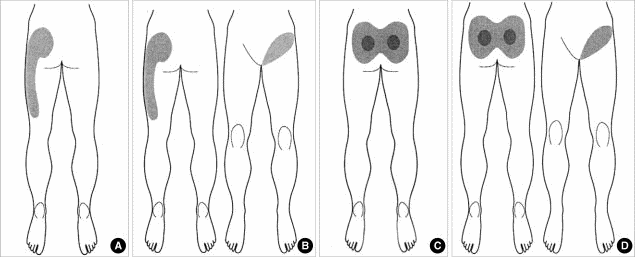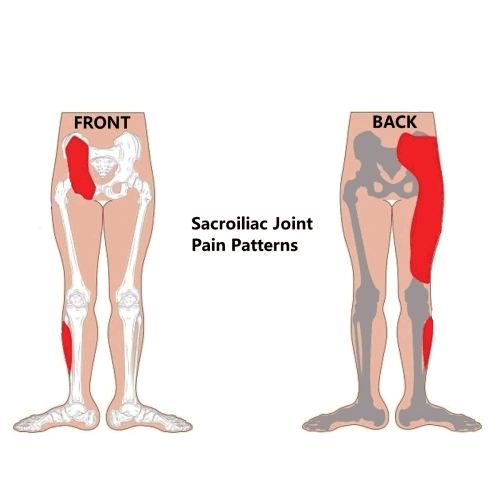Identifying the Symptoms of Sacroiliac Pain
With symptoms of sacroiliac pain, most people do not think very much about where the sacroiliac joints are located in the body, unless they happen to be suffering from pain directly in the area.
 Basically, the sacroiliac joints are connected to the sacrum, which is a large, triangular bone of the lower portion of the spine. While most of the vertebrae that form the spine are movable, the five vertebrae forming the sacrum are fused and immobile. The iliac bones of the pelvis are connected to the sacrum joints by various strong ligaments, so there should be very little motion in the sacroiliac joints. Since the pelvic area supports the weight of the erect upper body, it bears a lot of stress which can result in wearing away of cartilage and arthritic pain.
Basically, the sacroiliac joints are connected to the sacrum, which is a large, triangular bone of the lower portion of the spine. While most of the vertebrae that form the spine are movable, the five vertebrae forming the sacrum are fused and immobile. The iliac bones of the pelvis are connected to the sacrum joints by various strong ligaments, so there should be very little motion in the sacroiliac joints. Since the pelvic area supports the weight of the erect upper body, it bears a lot of stress which can result in wearing away of cartilage and arthritic pain.
Pain is one of the common symptoms of sacroiliac pain, but it is often difficult to identify the specific area the pain originates from. Stiffness and pain can affect one or both hips, the back, groin or thighs. Inflammation of the SI joint and arthritis are sometimes identified as causing sacroiliac pain. Pain from this condition is often reduced when the patient lies down, but the discomfort increases with walking and standing.
The sacroiliac joint is sometimes compromised if the structure of ligaments meant to support it are torn or damaged. The symptoms of sacroiliac pain can be less severe and feel like a dull ache, but with physical activity they can become a more severe sharp or stabbing pain. Actions such as climbing a hill or stairway, bending forward or standing after sitting for a prolonged time can result in increased pain.
Common therapies to help with symptoms of sacroiliac pain are methods to help stabilize the joints like a sacroiliac belt that can prevent excessive motion. Other forms of treatment are heat therapy such as a moist heating pad applied to the joints, massage and stretching the gluteal and priformis muscles may help as well as chiropractic adjustments to help with better alignment. Sometimes injections may help with difficult cases, but rarely is surgery needed.
The sacroiliac joint pain of more than half of those suffering from the condition is caused by some traumatic injury such as an automobile accident or a serious fall.

SI Joint Pain Patterns: General – Symptoms may be below the knee and even into the foot.
Causes
- Trauma (falls, accidents)
- Ligament strain and/or stress
- Degenerative arthritis
- Inflammatory arthropathy (sacroiliitis)
- Spondyloarthropathies, like Ankylosing spondylitis, psoriatic arthritis, reactive arthritis and inflammatory bowel disease
- Infection – rare
- Moderate impact exercises (jogging, lifting)
- Secondary to previous spinal fusion
- Secondary to scoliosis and/or leg length discrepancy
A 2020 study in Health SA showed that specific sacroiliac chiropractic adjustments can have a positive effect on the angles of the pelvic bones resulting in a levelling of the pelvis into a correct anatomical alignment. The mean change in angle was 2.25 degrees on the side of dysfunction.
A 2021 study in Regional Anesthesia & Pain Medicine indicates the lower part of the joint seems to be the main source of pain, which is innervated by lumbar and sacral nerves via the posterior sacral network. The upper part is directly innervated by lumbar nerves and should not be neglected.


